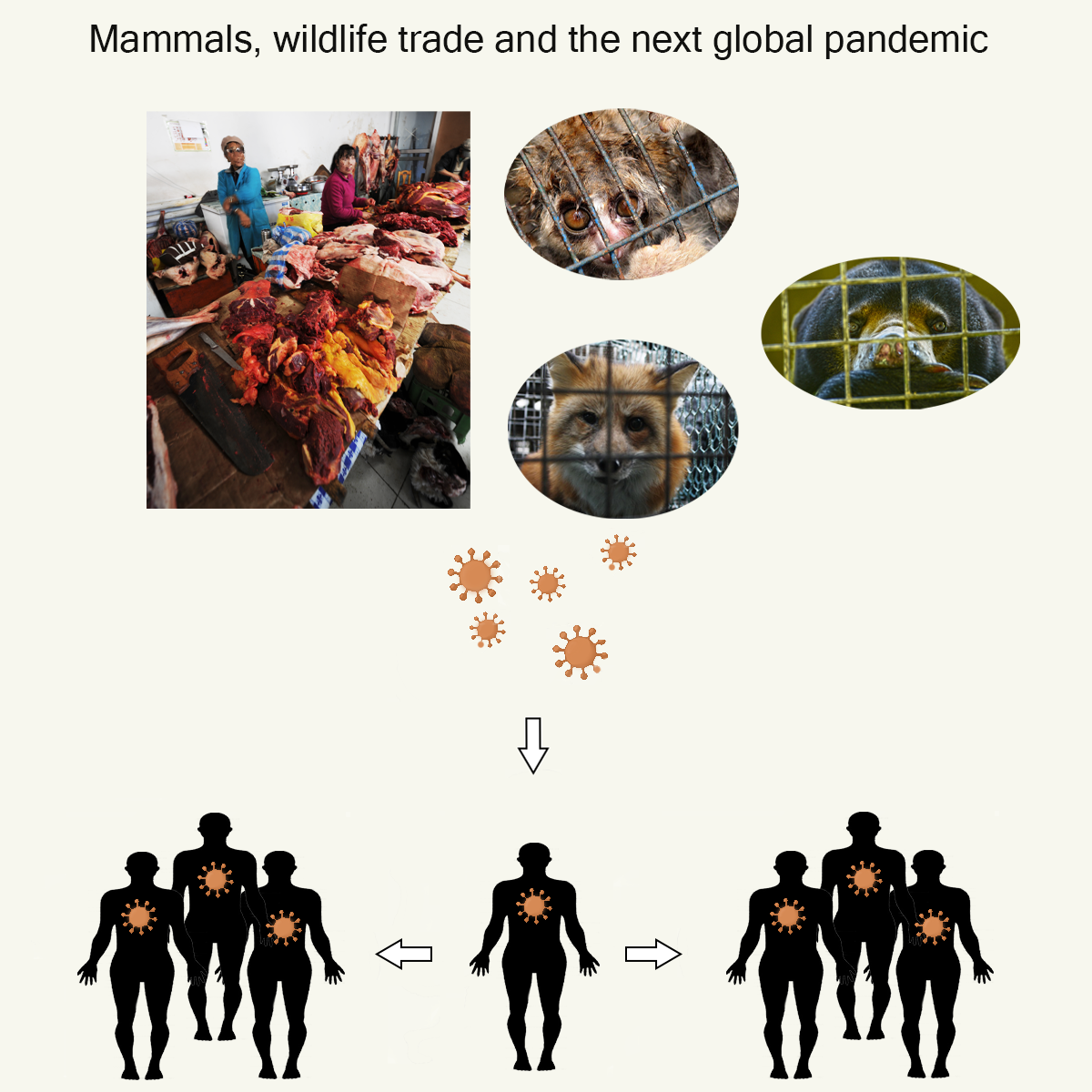The role of the wildlife trade as a source of zoonotic diseases in humans has long been debated. (Zoonotic diseases are those that are naturally transmissible from vertebrate animals to humans.) In a new study just published in the peer reviewed journal Current Biology, I and a number of fellow scientists show that a quarter of the mammals in the wildlife trade host 75% of known zoonotic viruses, providing some of the first empirical evidence that wildlife trade and zoonotic disease risks are strongly associated.

Graphic depicting spread of zoonotic diseases infectious to humans from wildlife trade (wet markets, pet markets etc.)
Study highlights
- A quarter of mammals in the wildlife trade host 75% of known zoonotic viruses.
- Ungulates (hoofed mammals), primates, carnivores and bats are the major zoonotic reservoirs in the wildlife trade.
- Not all mammals in the wildlife trade host viruses harmful to humans.
- Mitigation measures should focus on reservoir species to prevent future pandemics.
Study summary
Most new infectious diseases emerge when pathogens – disease causing microorganisms – transfer from animals to humans. The suspected origin of the COVID-19 pandemic in a wildlife wet market has resurfaced debates on the role of the wildlife trade as a potential source of emerging zoonotic diseases. Yet, there are no studies quantitatively assessing zoonotic disease risk associated with wildlife trade. At least not until now.
Combining data of mammal species hosting zoonotic viruses and data on mammals known to be in current and future wildlife trade, we found that slightly more than a quarter (26.5%) of the mammals in the wildlife trade harbour 75% of known zoonotic viruses, at levels much higher than domesticated and non-traded mammals. The traded mammals also harbour a distinct composition of zoonotic viruses and different host reservoirs than non-traded and domesticated mammals.
Furthermore, in the study we highlight that primates, ungulates, carnivores and bats represent significant zoonotic diseases risk as they host 132 (58%) of 226 known zoonotic viruses in the present wildlife trade. Whereas species of bats, rodents and marsupials represent significant zoonotic diseases risk in future wildlife trade. As a result, the risk of carrying zoonotic diseases is not equal for all mammal species in the wildlife trade.
Overall, our findings strengthen the evidence that wildlife trade and zoonotic disease risks are strongly associated, and that mitigation measures should prioritize species with the highest risk of carrying zoonotic viruses.
Curbing the sale of wildlife products and developing principles that support the sustainable and healthy trade of wildlife could be a cost-effective investment given the potential risk and consequences of zoonotic disease outbreaks.
